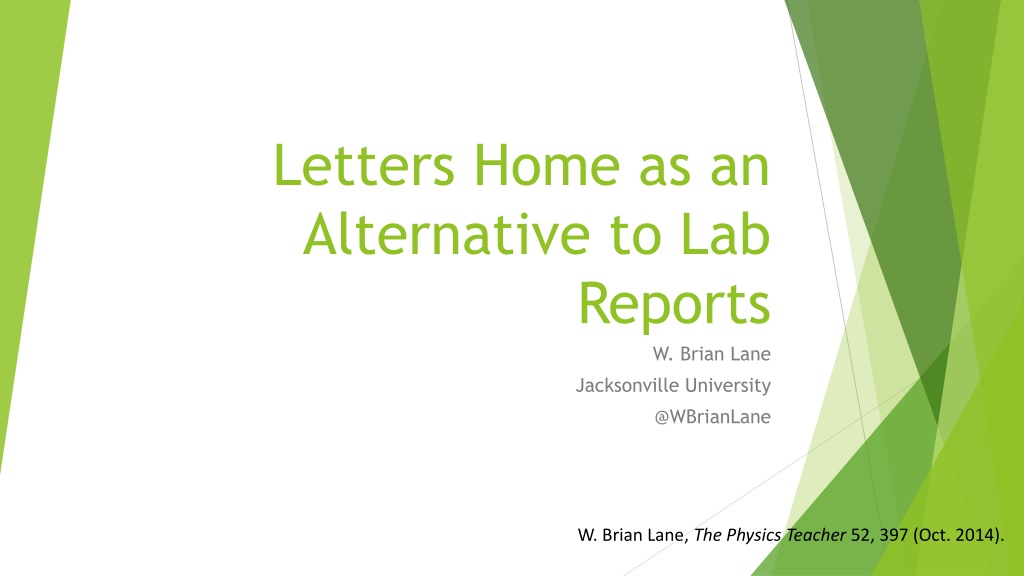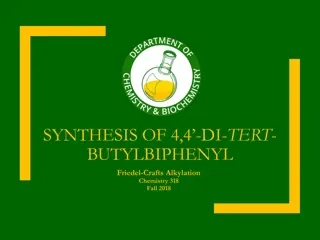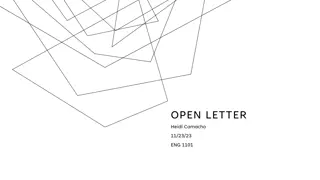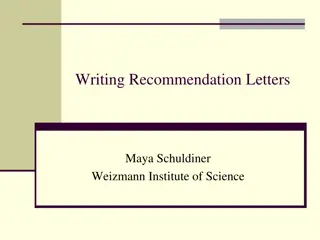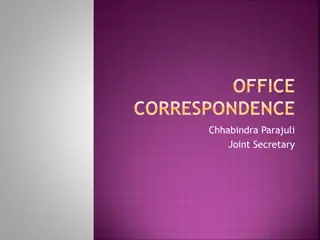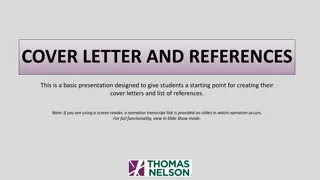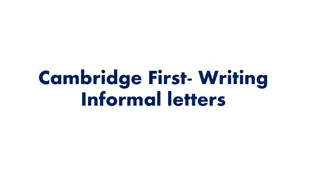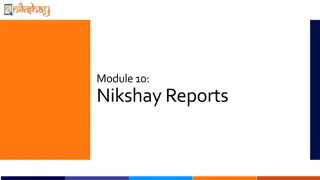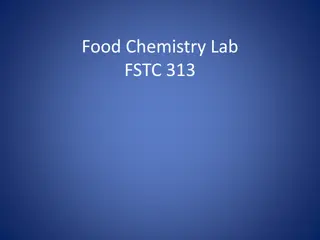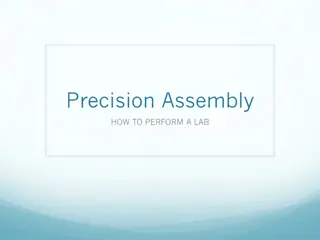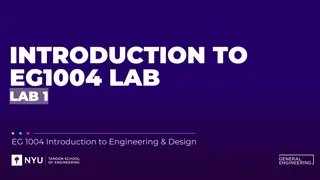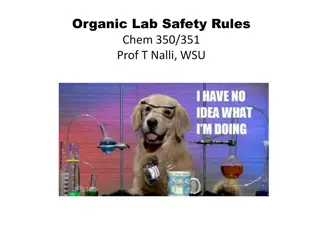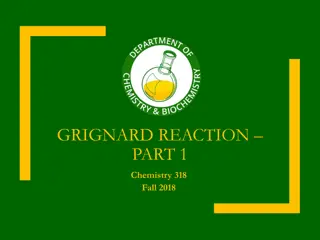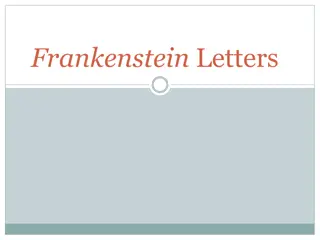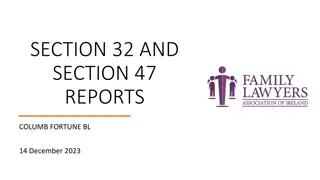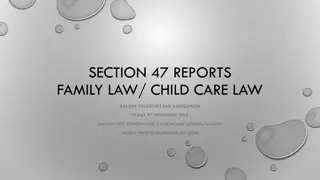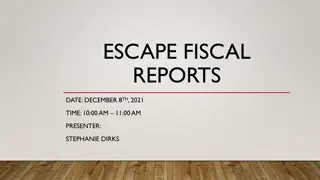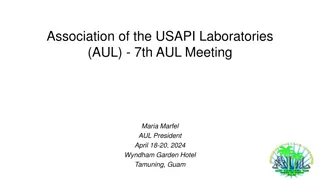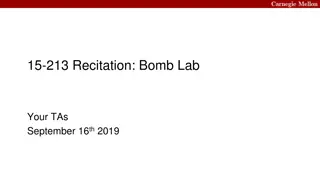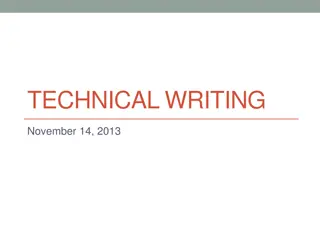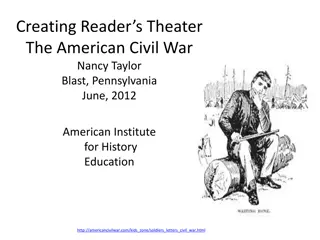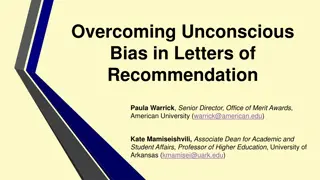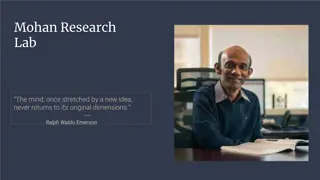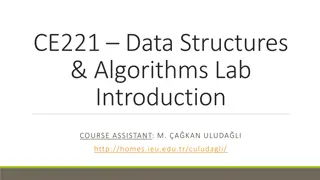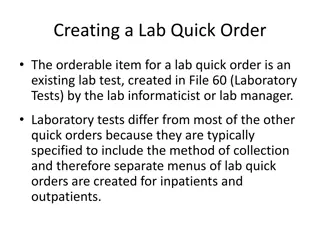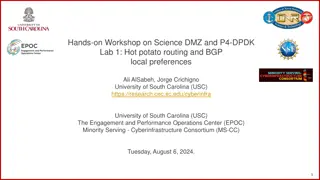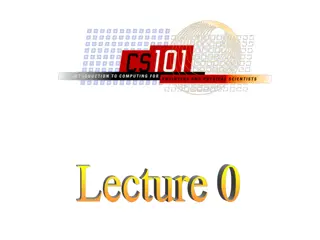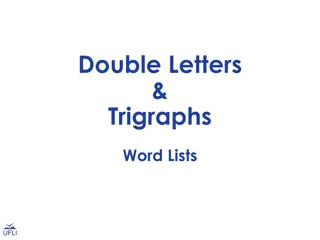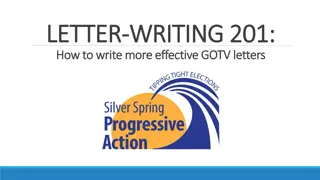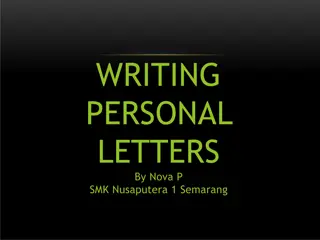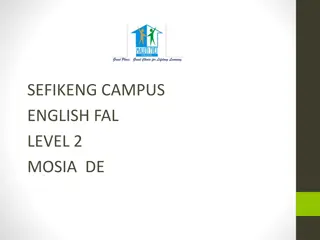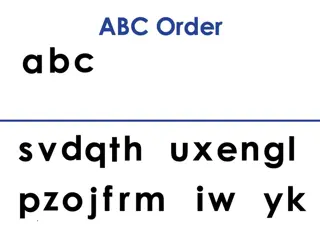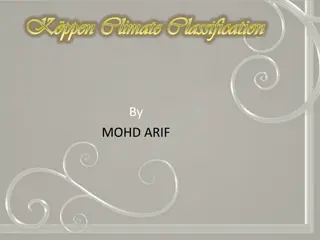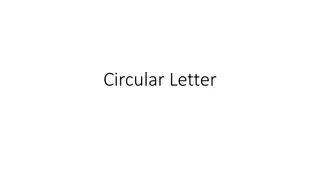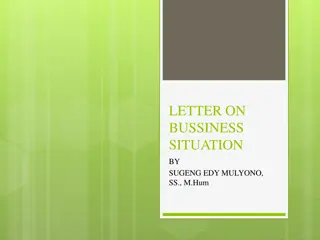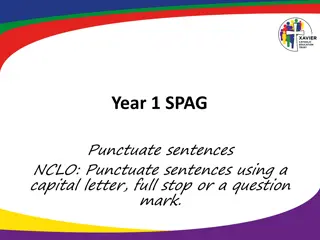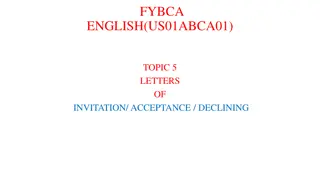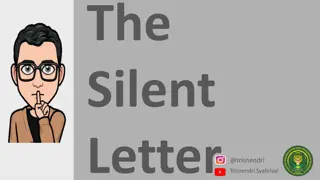Revolutionizing Lab Reports Through Letters Home
Explore how switching from traditional lab reports to Letters Home assignments in physics classes can improve student engagement, writing skills, and understanding of physics concepts. By creating authentic writing experiences for students with real-world relevance, this innovative approach enhances learning outcomes, fosters creativity, and bridges the gap between academic writing and practical communication.
Download Presentation

Please find below an Image/Link to download the presentation.
The content on the website is provided AS IS for your information and personal use only. It may not be sold, licensed, or shared on other websites without obtaining consent from the author. Download presentation by click this link. If you encounter any issues during the download, it is possible that the publisher has removed the file from their server.
E N D
Presentation Transcript
Letters Home as an Alternative to Lab Reports W. Brian Lane Jacksonville University @WBrianLane W. Brian Lane, The Physics Teacher 52, 397 (Oct. 2014).
Letters Home as an Alternative to Lab Reports Impact of inauthentic information flow The Letter Home Student work & recipient responses Bridging to the traditional technical paper Next step: Formal assessment
Impact of Inauthentic Information Flow Lab reports are written to the instructor who already knows the physics. Students write to appease instructor s requirements. Concerned about minimum length/number of sections. Don t develop insight. Students are underprepared for real-world writing: To a specific audience who needs/wants the information. Students need to practice writing to a real audience.
The Letter Home (LH) E-mailed to a recipient outside of class. Usually to a non-physicist. Instructor is CC d. Grade based on Whether LH can be understood by recipient. Whether LH can teach recipient something about physics. Description of set-up, results, and conclusions. Student must consider recipient s background, expectations, and interests, just like in real writing.
Student Work & Recipient Responses Generally, students take LH assignment seriously. Better explanations. More creative diagrams. Questions & praise from recipients further student motivation & learning.
Bridging to the Traditional Technical Paper Can bridge to more formal writing by scaling up audience expertise. Non-physicist friend. Friend from HS physics class. HS math teacher. HS physics teacher. College math professor. College physics professor.
Next step: Formal Assessment How is the quality of student writing impacted? How is student learning during the lab impacted? How is student reflection during writing impacted? How is student motivation impacted by support from outside class?
Letters Home as an Alternative to Lab Reports Inauthentic information flow has negative impact on learning The Letter Home provides an authentic writing experience Student work & recipient responses both positive Bridging to the traditional technical paper via audience selection Next step: Formal assessment W. Brian Lane, The Physics Teacher 52, 397 (Oct. 2014).
Information Flow: Traditional Lab & Report Lab Instruction: Knowledge Transferred INSTRUCTOR STUDENT Lab Report: Knowledge Transferred Lab Activity: Knowledge Generated
Traditional Model Deficiencies Lab Instruction: Knowledge Transferred INSTRUCTOR STUDENT Lab Report: Knowledge Transferred (or just confirmed?) Lab Activity: Knowledge Generated (hopefully)
Information Flow: Inquiry Lab Lab Instruction: Knowledge Transferred INSTRUCTOR STUDENT Lab Report: Knowledge Transferred (or just confirmed?) Inquiry-Based Lab Activity: Knowledge Generated Lack of motivation for Engagement during lab Reflection after lab Quality writing
Information Flow: Inquiry & Letter Home Lab Instruction: Knowledge Transferred INSTRUCTOR STUDENT Letter Home: Knowledge Transferred Inquiry-Based Lab Activity: Knowledge Generated AUDIENCE
